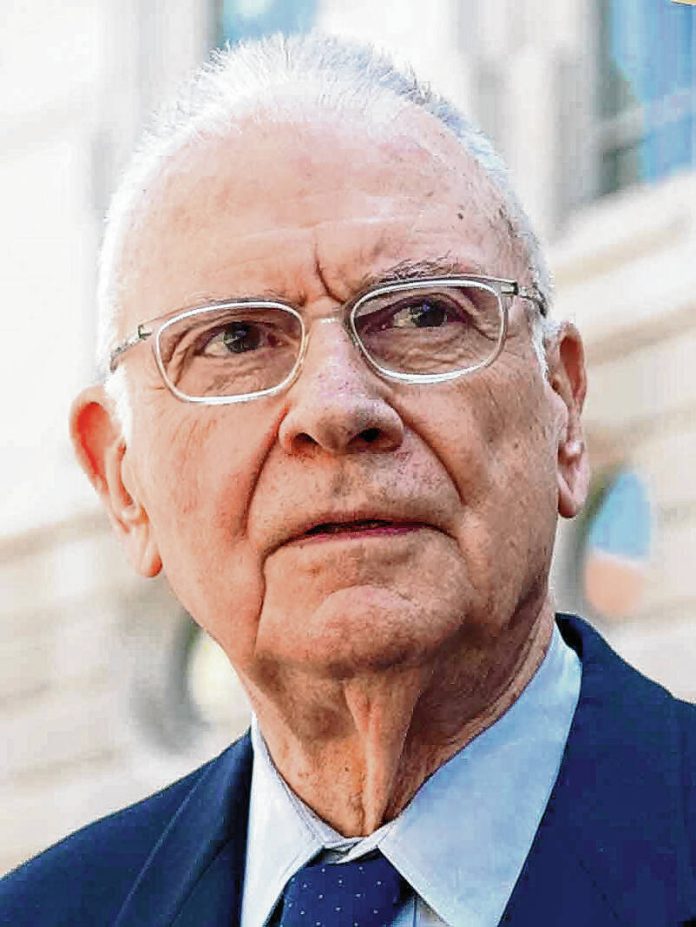We have lived with the existential threat of nuclear weapons for almost 80 years. To say we have become complacent would be an understatement. Knowing the devastation a nuclear war would produce, we go about our lives and assume it can never happen.
But the threat is real, and it is probably getting worse. According to a recent, thoroughly researched and reported New York Times series titled “The Brink,” the risk of nuclear war is the highest it’s been since the Cold War ended 30 years ago.
“Nuclear war is often described as unimaginable,” Times national security columnist W.J. Hennigan writes. “In fact, it is not imagined often enough.”
Russia’s invasion of Ukraine and Vladimir Putin’s warnings that Russia could use nuclear weapons in battle have been the latest flashpoint. In the fall of 2022, U.S. intelligence analysts concluded there was a 50-50 chance Russia would launch a nuclear strike if Ukraine threatened to regain Crimea, according to the Times. The nuclear threat also hangs over conflicts in the Middle East, the Taiwan Strait and the Korean Peninsula.
I have long believed that the possibility of a nuclear disaster is the greatest threat to humanity. Nothing compares to the awful power of nuclear weapons when it comes to causing death and destruction. We saw that clearly when the U.S. dropped atomic bombs on the Hiroshima and Nagasaki to force Japan’s surrender in World War II.
We have been incredibly lucky that nuclear weapons haven’t been used in warfare since then. The 1962 Cuban Missile Crisis brought us close to the brink, but the crisis was contained. Deterrence – the idea that any nuclear attack would be met with a devastating counterattack – has worked.
We have been lucky, but we have also been smart. At the height of the Cold War, nuclear powers possessed over 70,000 warheads. Thanks to arms control agreements and efforts like the Nunn-Lugar initiative to dismantle excess stockpiles, nuclear weapons were reduced by at least 80%.
Today, however, arsenals are being modernized and, in some cases, expanded. And it’s no longer just the Americans and Russians who are playing the nuclear game. Nine countries, including China and North Korea, have nuclear weapons. Iran has reportedly moved closer to being able to develop nuclear weapons since the collapse an agreement to deter its nuclear capacity.
Near the end of Cold War, President Ronald Reagan and Soviet leader Mikhail Gorbachev declared that a nuclear war “cannot be won and must never be fought.” Their cooperation led to significant agreements to limit nuclear forces. But the safety net of treaties has frayed as tensions between America and Russia have grown. Only one major agreement remains: the New START strategic arms treaty. Putin has suspended Russia’s participation, and the treaty will expire in 2026.
Experts say the danger isn’t that Russia or another adversary would drop large bombs like those we used against Japan in 1945. Instead, it comes from the temptation to use tactical nuclear weapons, which are smaller but many times more powerful than conventional arms. U.S. officials believe Russia has about 2,000 such weapons, some small enough to fit in an artillery shell. Their use would mean the taboo on nuclear weapons had been broken. Responses could escalate.
The key to navigating this existential threat is leadership. To keep us safe and secure, we need leaders to recognize the seriousness of the problem, set the agenda for addressing it, identify the concrete goals that they can achieve and marshal the resources to achieve them.
We also need greater awareness of the threat. In our American democracy, leaders respond to the concerns of the public, and they aren’t hearing much about the risk of nuclear war. The likelihood may be low, but the risk is high. It deserves attention from our leaders and from all of us.
Lee Hamilton is a senior adviser for the Indiana University Center on Representative Government; a distinguished scholar at the IU Hamilton Lugar School of Global and International Studies; and a professor of practice at the IU O’Neill School of Public and Environmental Affairs. He was a member of the U.S. House of Representatives for 34 years. Send comments to [email protected].




